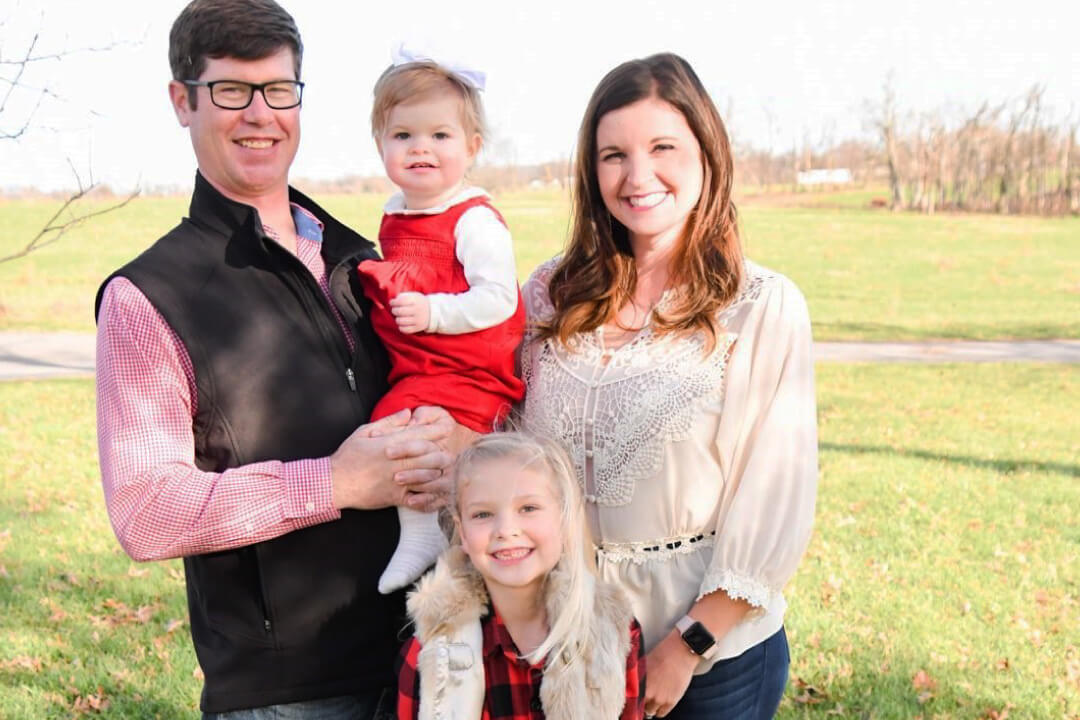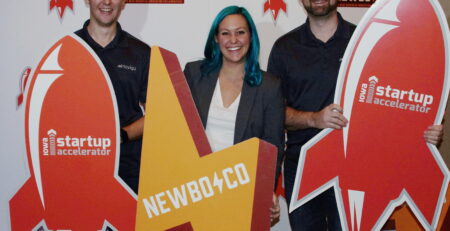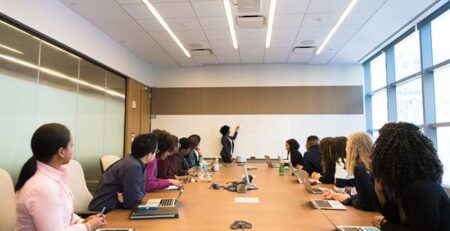Fifth-Gen Missouri Farmer Creates an App That Aims to Revolutionize Ag Labor
Good ideas come from all kinds of places – like the seat of a tractor.
That’s where inspiration hit Kevin Johansen. As a fifth-generation farmer, he was all too familiar with the labor challenges facing both producers and workers. But a brainstorm behind the wheel led to AgButler, an app that connects farmers and ranchers with high-quality labor.
Backing a big idea with research and data
Kevin’s agricultural roots run deep. His family’s operations include two century farms. While working on his animal science degree, he worked in cattle operations around Missouri. His work experience has been focused on the ag world. And a few years ago, he and his wife, Jamie, moved their family back to Lebanon, Missouri. There, Kevin started working more on day-to-day operations of the family farm – hence the time in the tractor.
“I spent a lot of time listening to entrepreneurial podcasts,” Kevin says. “That’s where the AgButler brainchild came from.”
Like so many successful entrepreneurs, Kevin shopped his idea around. Not at pitch events or accelerators, but around the kitchen table. He and his wife discussed the app idea, then shared it with a small group.
“We put together an easy survey and sent it out to family and friends,” he says. “We covered a pretty good swath of production agriculture in Missouri and other states, and we included different industries, too. The biggest result of this was the question, ‘If there was a platform that allowed you to hire labor within a close radius, would you use it?’ 82% of respondents said yes or maybe. That validated it for us.”
The survey also provided data on how often producers hired part-time labor and how much they spent on it. The research emboldened Kevin to move forward with the idea.
Building a business foundation
In the summer of 2018, Kevin started an LLC and gathered a team. They created a business plan. But there was just one issue.
“Nobody in our group could code,” Kevin says. “And the costs to put something together were high.”
Kevin proved that you don’t have to work with a fancy venture capital firm to move ahead. He went to the local bank in Tipton that had financed his 4H and Future Farmers of America (FFA) projects and took out a loan. That funding, plus personal investments, enabled the team to get their documentation in order, build a website and do some initial advertising. They were also able to put together a demo.
“When we talked about AgButler, it was hard for people to understand what we were trying to do,” Kevin says. “The demo, and being able to compare our app to ride-sharing apps, clicked.”
The National Center for Beef Excellence helped connect the AgButler team to Kakkuro Suite, which built out the demo. The center also helped the group apply for a grant from the Missouri Agricultural and Small Business Development Authority (MASBDA). With this momentum, the team decided to try their hand at entrepreneurial competitions, too.
“Those were some lofty goals,” Kevin says. “We weren’t fully operating. We had no revenue, no app, just a demo. But we decided to apply to the Farm Bureau Ag Innovation Challenge.”
This was the time of toil and development that would be a montage in a movie. Kevin and the team were building the foundation of their business – working with a CPA, switching to a C Corp, connecting with securities counsel so they’d be ready to find investors. The activity wasn’t glamorous, but it was necessary.
Through all this, they kept selling. AgButler found an active group of prospects on social media and worked on educating people about the agricultural labor shortage in the Midwest. By the beginning of 2020, things were really cooking.
“We were able to get a spot in the Ag Innovation Challenge as a semifinalist,” Kevin says. “We were one of 10 businesses that got to compete at the national Farm Bureau event in Austin in January. Farm Credit was a sponsor, and they had two other events – the Nebraska Farm Show and the Iowa Farm Show, and so we competed there, too. And we were notified that we were able to go on to the interview step of the MASBDA value-added grant, too.”
The beginning of the year was a whirlwind. Then COVID-19 hit.
More to the story below …
[[CTA]]
A pandemic pivot
Since the pandemic put a hold on fundraising, Kevin and the team decided to focus on building their product and connecting with their target audience.
“My wife has a great network of ag communications and journalists who saw what we were doing and were asking for stories,” Kevin says. “That gave us a larger platform nationally and a digital presence that we could expand on. That’s where we focused when in-person events weren’t happening. We pivoted totally to digital communication and education.”
Working with Kakkuro Suite, the AgButler team figured their platform would be ready by November.
“Come March, things got a little more serious,” Kevin says. “Missouri Farm Bureau reached out to us and asked how far along we were.”
Once colleges and high schools went virtual, ag curricula had to change. But educators and ag leaders wanted to make sure students still had the opportunity for hands-on operations experience. Producers needed workers, and no one knew what COVID-19 would bring.
Working with Farm Bureau and Missouri Cattlemen’s Association, the AgButler team quickly put together a pilot called MO AgConnection. Producers could send in jobs they had coming up, and students could find openings in their counties. This stopgap measure ran from April through the beginning of June, covering spring planting, wheat harvest and the first cutting of hay. It was a great way for AgButler to test things in real time and build relationships.
“We got a lot of great publicity out of it, but that’s not why we did it,” Kevin says. “It was beneficial all the way around.”
With so many projects on hold due to the pandemic, the developers at Kakkuro Suite were able to move AgButler’s release date from November to summer 2020.
Modifying the business plan yet again
Moving up AgButler’s release date was a good thing. But it meant yet another change to the business plan. And there was also an emotional shift because, wow, this was really happening.
“I’m not going to lie – it was ‘take a breath and gather yourself and continue moving forward,’” Kevin says.
A roundtable in Milan included producers, educators and leaders from business and agribusiness. The gathering was a milestone in the validation process. So, the team planned on launching AgButler at the Missouri State Fair. But then the fair was abbreviated to just junior shows instead of the usual showcase of all things ag.
“How many times have I ripped up this business plan?” Kevin laughs.
Little did he know that MU Extension and the Missouri Agricultural Foundation were releasing an insightful ag workforce assessment report about Missouri. The report showed that the app was a good fit for Missouri and results could be replicated in other states. All it would take was working with local governments and grassroots organizations – which AgButler had already learned how to do in Missouri. The app launched, and the pieces were coming together.
The team focused again on social media. An eight-week campaign showed the app’s features and highlighted information related to the problem AgButler was trying to solve. By the end of the year, AgButler had 350 users.
“2020 was the year of the pivot for us,” Kevin says. “At least every two weeks, we had to change things up on what we were trying to do. But now we can actually put somewhat of a pencil plan together and not have as big of an eraser. Some can be put in ink.”
Solid plans are reassuring, but flexibility can pay off, too. Kevin heard about Pure Pitch Rally. While the event isn’t ag-based, some ag-focused businesses have had a lot of success. So he applied and was one of eight pitchers in October. AgButler walked away with $12,000 in funding and a new outlook.
“We were exposed to a whole new environment. It gave us an opportunity to get out in front of the KC startup investment community and make a lot of great connections outside of ag industries,” Kevin says. “We talked to mentors, got feedback on our plans and made connections to help us down the road.”
Kevin also connected with efactory in Springfield. He’s been working with the organization on updating pitch decks. He’s also connected with industry leaders through efactory’s mentor hours. These relationships and education are paying off.
In spring 2021, AgButler launched the second phase of its launch campaign. It’s growing by the day, and now has nearly 1,000 users across 41 states.
Advice for other entrepreneurs
Things in the AgButler world change at a moment’s notice. Kevin and Jamie are raising two young daughters. Jamie has a marketing firm, Honey Creek Media. And Kevin works full-time as a regional sales manager for an electrical equipment manufacturer. They help operate cattle and hay production for their families and are involved in community organizations and their church.
“We have a lot of irons in the fire,” he says.
There have been countless days when the only time to focus on AgButler was late at night.
“At times, it’s been exhausting, but we have an end goal in mind,” Kevin says. “Growing up in ag, you always have to get the job done. We have to be disciplined in our time management and be able to prioritize that time and set enough time aside.”
He encourages other entrepreneurs to organize their time – and their ventures.
“Get your foundation built,” Kevin says. “And validate everything ahead of time.”
He also suggests working with a core team of trusted partners.
“Don’t try to go it solo because you’ll burn yourself out, and that’s when doubt sets in,” Kevin says. “It doesn’t have to be a huge team, just one or two other people you can have honest conversations with.”
And then there’s the concept of risk.
“You’re going to have to stomach taking some risks. If you’re not willing to take a couple risks, running with that ‘a-ha’ idea is not going to work out well,” Kevin says. “If the idea is something that you see value in, then you will stay with it. There are times you do need to reevaluate, but more times than not, trusting your gut instinct is going to work out better than overanalyzing what you’re trying to do.”
Overall? So far, so good.
“The business side of things is not for the faint of heart,” he says. “You have to have some grit and have some thick skin to be able to endure the ride. We’re still climbing to the top of the roller coaster – we’re not even near close to the drop. The anticipation is still growing!”
Assistance for your entrepreneurial dream
Not sure where to start with your big idea? MOSourceLink can help. Our Resource Navigator includes more than 600 organizations across Missouri that can help you reach your goals.
Don’t even know what you don’t know? We’ve got you covered. Our Network Navigators can create a Personal Action Plan just for you. Give us some information about you where you are and where you want to be. Then, we’ll design a checklist of next steps for you, including who can help. And the best part? It’s free. Let us know how we can help you.











Leave a Reply